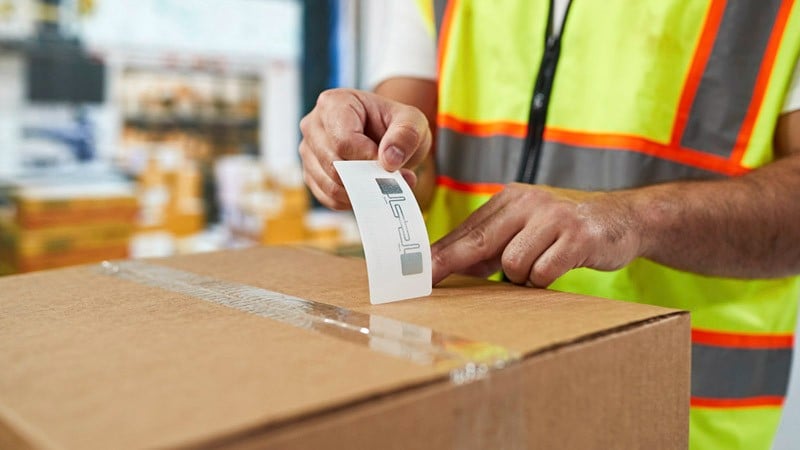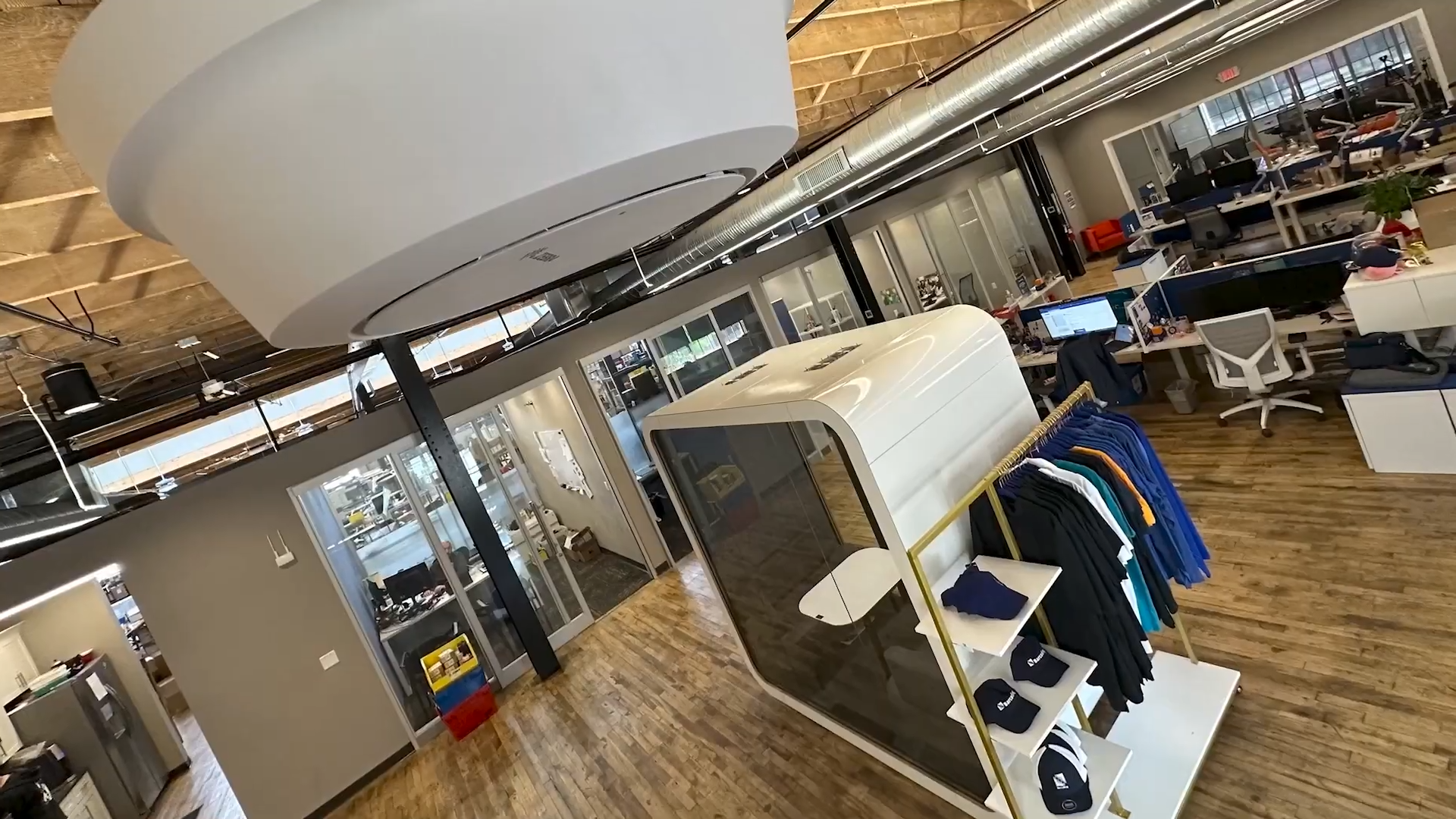Radio frequency identification (RFID) tags deliver item-level visibility and near-real-time awareness to inventory and asset management, supply chain and fulfillment logistics, security, and other key business applications.
RFID is wireless technology that connects items, whether products or assets, to the internet, enabling fast, accurate, automated item-level identification, location, and interaction.
But there’s more than just one type of RFID system, and choosing the best types of RFID tags and technologies for your application demands a certain level of expertise.
Why? Different systems and tag attributes can make each type better suited for varying tasks and environments. In fact, it’s not uncommon for several types of RFID tags to be used for a variety of tasks and environments within one operation.
Choosing the right RFID technology or combination of technologies isn’t a matter of what’s “best” in a general sense. Rather, it’s a question of suitability, capabilities, and cost-effectiveness considered all together.
Let’s take a look at the differences between RFID tag types and the technologies that effectively bridge the gap between objects and the internet of things (IoT) and integrate automated data capture into day-to-day processes.
Basic Components of RFID Technologies
On the most basic level, RFID-based data capture systems rely on three elements*:
- Transponders
- Antennas
- Readers
*It’s important to note the importance of software solutions, databases, and networks to handle the data carried, transmitted, and associated with RFID tags and systems.
Each RFID tag or label includes an embedded microchip transponder and antenna. (Some also include batteries, but we’ll come back to that.) An RFID reader transmits radio waves to interact with the transponder through its antenna, to “read” the data encoded on the chip. In an asset or inventory management system, the tag or label data is used as a key into a database, and interactions between readers and RFID tags or labels are recorded in the database through automated processes.
Typically, the RFID tag data is a unique, serialized, item-level identifier. The item-level tracking capability combines with IoT-connected systems and automation to make RFID an especially useful data capture technology for specific needs and use cases.
Types of RFID Tags & Labels
The most important distinction between RFID tag types is the way tags and readers communicate. Classifications include:
- Active RFID tags
- Passive RFID tags (including RAIN RFID)
- Semi-passive RFID tags (also called battery-assisted passive, semi-active, or active/passive hybrid tags)
- Bluetooth low energy (BLE) systems
Active RFID Tags
Active RFID tags incorporate a transmitter (transponder or beacon) and a battery as a power source, built together into a single unit. The battery powers the transmitter, enabling it to actively send data to an RFID reader. Tags with beacons transmit continuously. Tags with transponders transmit when activated by a reader’s radio signal.
A few active RFID tag examples, in terms of use cases, include high-value assets like machinery, vehicles, or construction tools. The tags are usually smaller than a smartphone, and are often built within a rugged, protective casing that can be riveted, zip-tied, screw-mounted, or even welded to objects. Active tags are most often used for large-scale applications that call for data to be read over greater distances as in construction, oil and gas, mining, and other industrial and logistics applications.
They most often transmit data in higher frequency ranges (850-950 MHz is common), and can often be read from a distance of 100 feet and more—and at higher speeds, as in electronic road toll collection.
Active tags are typically larger in size, have greater data capabilities, and can include environmental sensors that collect temperature, moisture, and other data to help protect high-value and sensitive assets or products. Among the most important advantages of active tags are:
- Longer read ranges
- Significant data memory
- Integration with other asset-control and geolocation technologies
- Availability of rugged and weather-resistant housings
A few of the potential downsides of active RFID tags include their higher cost, limited battery life (usually 3 to 5 years), and larger size. Active transmitters can also add another source of noise to work environments.
All things considered, when used to track and protect high-value or sensitive assets, active RFID systems’ ROI can be significant.
Passive RFID Tags, Including RAIN RFID
As the name suggests, passive RFID tags rely on the tag reader to supply power electromagnetically, rather than an integrated battery. This process of receiving power is called coupling. For this reason, tags are typically readable from about 20 feet away or closer, and passive tags are more often used in smaller-scale applications and large-scale RFID-based inventory and asset management systems.
Some common passive RFID tag examples include supply chain, product tracking and tracing, retail, warehouse, 3PL, gate controls, anti-counterfeiting, and pharmaceuticals. Returnable transport items (RTIs) and containers can also be tagged, or include built-in tags, for tracking and monitoring.
Because they don’t include their own power source, some of the advantages of passive RFID tags can include:
- Greater range of shapes, sizes, and materials (both inlays and hard tags)
- Lower cost per tag
- Embeddable formats that can fit into almost any product or packaging
- Potentially longer operational life, since no power source is needed and fewer parts means less potential for parts to fail
Passive RFID tags and readers are often used in item-level tracking applications, supply chain, IT hardware, document controls, medical facilities, and wristband or badge access controls.
What is RAIN RFID?
RAIN RFID is a brand name for ultra high frequency (UHF) RFID wireless technology, adopted in 2014 and used by the RAIN Alliance as a shorthand (much like the terms WiFi and Bluetooth) to simplify people’s understanding of passive, UHF RFID technology. The RAIN Alliance is an industry organization focused on expanding the use of this technology and cooperating as the use of IoT-connected everyday items continues to grow.
RAIN RFID conforms to GS1 EPC UHF Gen2 air interface protocol or to ISO/IEC 18000-63 standard parameters for air interface communications at 860 MHz to 960 MHz Type C. The RAIN Alliance opted to apply the brand name for this specific RFID technology to help avoid confusion with other types of RFID tags and systems.
Semi-Passive (or Battery-Assisted Passive) RFID Tags
Semi-passive RFID tags look more like passive tags in terms of size and ease of manufacture. but like active tags, they incorporate a power source—usually a small, eco-friendlier battery—to improve data transmission. This increases the tag’s read range and enables it to carry and transmit a larger quantity of data.
The end result is a tag that offers many of the benefits of active RFID tags, but at a price point that’s closer to a passive tag. Active/passive hybrid tags can:
- Support some sensors and memory functions for product condition tracking
- Be read from a medium distance (longer than passive tags)
- Cost less than active tags
Like active tags, hybrid RFID tags are limited by battery life.
Bluetooth Low Energy (BLE)
Compared to RFID systems, BLE is relatively new. Most people are familiar with Bluetooth technology as it’s used for internet-connected devices to communicate, like wireless headphones, speakers, and other peripherals.
BLE systems use Bluetooth communication to operate like active RFID systems, “beaconing” from tags to readers that transmit data to the cloud. BLE systems are used for shorter read ranges, and because many devices are Bluetooth enabled, they can be easy-access at a relatively low price point because additional, specialized devices or hardware aren’t needed.
BLE offers an inexpensive, scalable solution for many simpler use cases that typically involve sensors. BLE technology allows for development of monitoring dashboards for things like equipment performance, maintenance, and ERP systems in manufacturing environments, or a variety of applications that fall within the Internet of Things (IoT).
Key Considerations When Implementing RFID
Global RFID users in nearly every industry from retail to healthcare benefit from the item-level visibility and IoT connectivity to streamline operations, increase efficiency and accuracy, and reduce overall costs.
Choosing the best combination of RFID system technologies and components requires a balance of potential advantages and drawbacks such as component size, cost, product lifespan, system integrations, durability to withstand harsh environments, and much more. The wide range of choices of RFID tag and reader types can make almost any configuration possible. But to get the most from your RFID system from day one—and to ensure long-term ROI—it’s crucial to partner with an expert.
An experienced team starts the evaluation process with an in-depth evaluation of your needs that focuses on your process and people first, to match the optimal technologies with each process step:
- Industry, challenge, working environment
- Information and data handling needs
- Transmission locations and ranges
- Tag size, shape, flexibility, and durability
- Costs of tags, readers, and peripheral hardware
- Integration capabilities
By starting with a focus on your needs, your process, and your users — the people who interact with the data and systems minute-to-minute — a trusted RFID expert can guide you to the right technologies and systems to achieve your goals, protect your assets, and safeguard your business.
Learn more about the ways RFID is at work throughout the supply chain, increasing visibility, accuracy, efficiency, and connectivity in a rapidly evolving landscape. Just click below to download our free guide.







